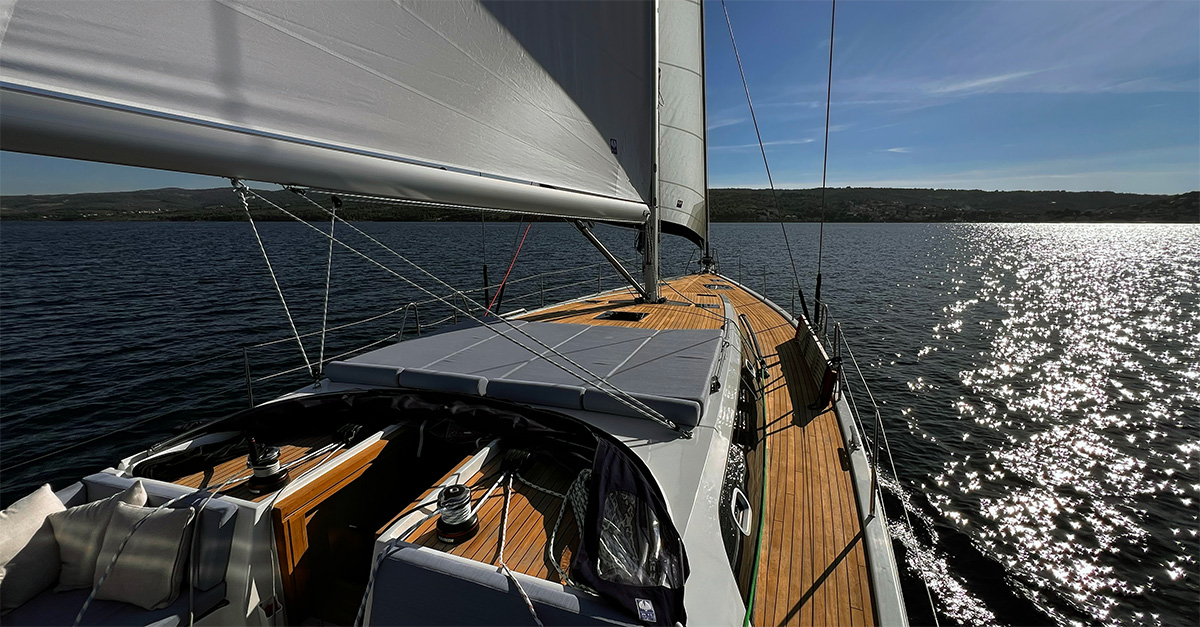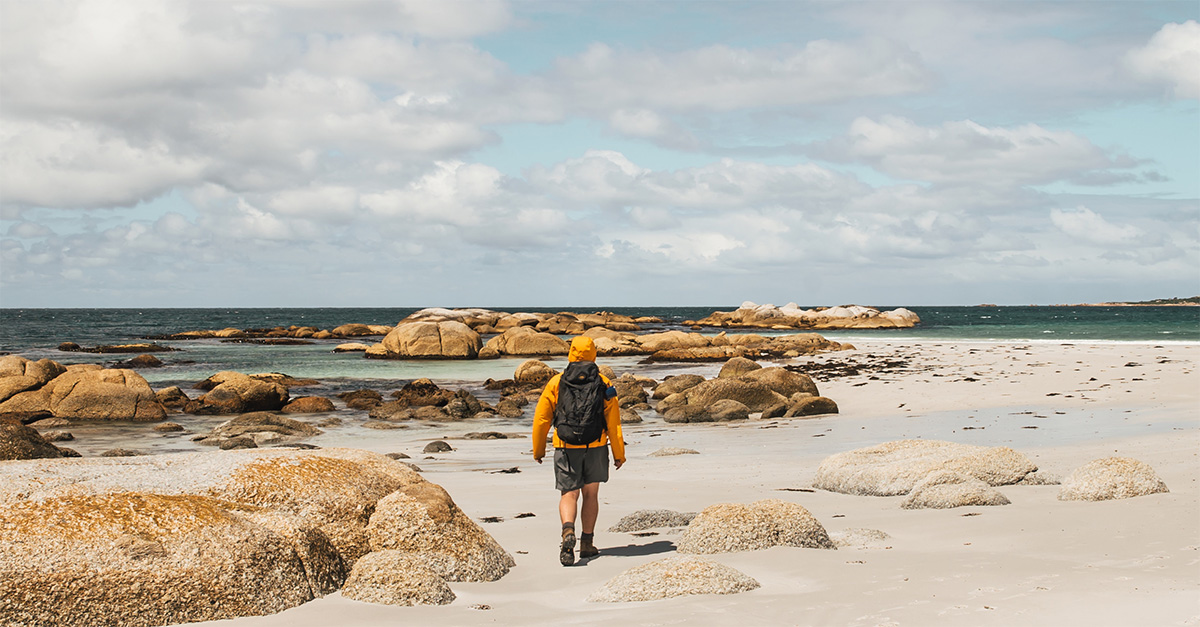From Bondi Beach to the Blue Mountains, Ellie Fazan finds plenty to appeal on a premium fam trip to New South Wales.
Click here to download and save as a PDF.
There’s no better way to beat jet lag than by heading straight from the airport to the beach. Fact.
That’s why, just hours after touching down in Sydney, we’re at the mighty Bondi, where surfers skim the waves and the cool blues of the Pacific Ocean crash against the shore.
In a city of icons, nowhere sums up the laid-back lifestyle of New South Wales quite like Bondi. There’s the most-Instagrammed lido in the world, Bondi Icebergs Club, at one end, a kids’ pool at the other, and some of Sydney’s best bars, restaurants and cafes lining the promenade in between. It’s the stomping ground of the city’s beautiful people, where surfers and tourists come to sample the epitome of Aussie cool.
“There’s the most-Instagrammed lido in the world, Bondi Icebergs Club, at one end, a kids’ pool at the other.”
If, like me, you’re a little intimidated at the idea of squeezing into a wetsuit and getting into the water in front of Sydney’s pro surfers, don’t be. The teachers at Let’s Go Surfing Bondi make it easy and, after a couple of hours, I’d caught my first wave – albeit a little frothy white one.
Many people use Sydney as a jumping-off point to visit Australia’s big-hitting sights, but it would be a mistake to miss out on all that New South Wales has to offer. After our jet lag-busting surf lesson and a proper Aussie breakfast of flat white and bacon-and-egg sandwich, our group of five travel agents – who won their places on this premium fam trip through a Travel Weekly competition with Qantas and Destination New South Wales – set off to explore the state in style.
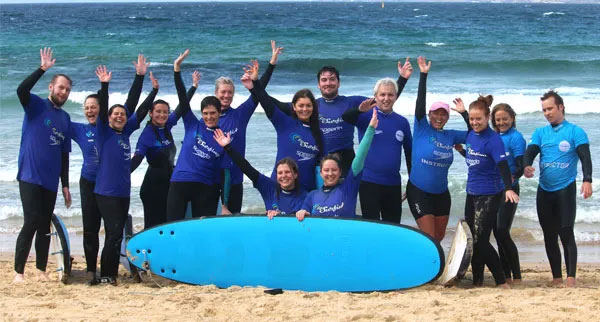
City living
The gleaming sails of Sydney Opera House fill the frame of the bedroom window at Sydney’s Park Hyatt, which sits among the cobbled lanes of The Rocks, hugging the curve of the harbour.
Waking early the next morning, I sit on the balcony and watch the sky change from black to bruised purple to peach, until the sun bursts into gold from behind Sydney Opera House and the harbour comes to life, with the Manly Ferry buzzing commuters to and fro, and Sydneysiders running beneath my window.
You can’t spend so much time staring at the opera house without actually visiting. Located on Bennelong Point, this area has long been a meeting place for Aboriginal people. Everyone from Kanye to Prince has performed here, plus there’s ballet, comedy and the annual light and music festival Vivid Sydney.
“I sit on the balcony and watch the sky change from black to bruised purple to peach, until the sun bursts into gold from behind Sydney Opera House.”
A backstage tour with our guide, Daryl – a cross between Robin Williams and Woody Allen – reveals incredible arched concrete ceilings and unreal views across the harbour. Designed by Danish architect Jørn Utzon, who pored over nautical maps and looked at ancient meeting places for inspiration, its iconic shape is said to evoke the harbour’s cliffs and sails.
Strolling back to the hotel, the city is singing. There’s a street market, music and a buzzing vibe, and we get back in time for a swim in the rooftop pool before the sun dips behind the mighty bridge.
Next morning, we get to marvel at the opera house all over again on a climb along Sydney Harbour Bridge. At 134m above sea level, it’s an elevating experience and reveals yet more incredible views of the city.
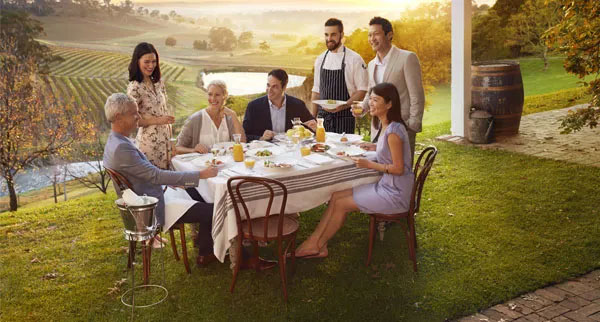
Best bites
In spring, New South Wales turns purple as the jacarandas burst into bloom, and they grace the roadside for almost all of our two-hour drive to the Hunter Valley. This is Australia’s oldest wine region, with a history of viticulture dating back to the early 19th century. Today, it’s home to a flourishing foodie scene and more than 150 cellar doors, where guests can try and buy wine.
Our hosts for lunch, Robert and Sally Molines, arrived in 1973 when it was a sleepy place with just one restaurant and two hotels, and the couple went on to establish some of the Hunter’s best-loved dining destinations.
Despite this formidable legacy, dining at Bistro Molines – their current venture – feels like stumbling upon a well-kept-secret. The pretty dining room has the feel of a traditional French country restaurant, with the valley dropping away to reveal views of the Tallavera Grove vineyard.
“This is Australia’s oldest wine region, with a history of viticulture dating back to the early 19th century.”
We arrive to find Sally arranging white roses and bold blue hydrangeas, while Robert is in the kitchen whipping up a heritage tomato salad and filet mignon with red wine jus. “I wake up every day and wonder what I’m going to cook,” he says. “It’s instinct, driven by colour and temperature of the season.”
Our next stop is Pepper Tree Wines, a tranquil country retreat also founded by the Molines along with two other couples, and set along a sweeping driveway that leads to a grand 19th-century convent-turned-boutique hotel.
The cellar door is in a pretty spot next to the kitchen garden, and we sit under a vine-draped canopy with delicious cheeses and a selection of exceptional wines, from a brilliant shiraz viognier to a startlingly fresh ice wine. In such a bucolic setting, you could forget you’re in Australia – at least until a mob of kangaroos bounces across the lawn.
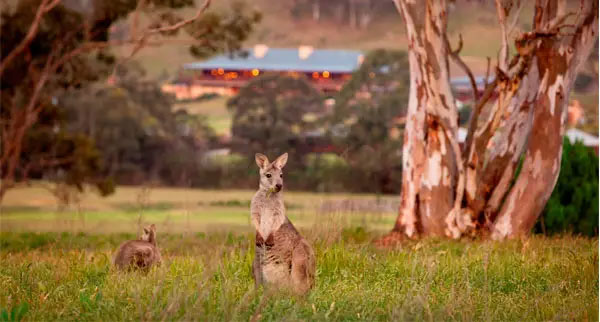
Mythbusting
Kangaroos aren’t the only natives here in New South Wales. Despite the perception that this state is lacking in Aboriginal culture, just an hour away in Port Stephens, Sand Dune Adventures is a thriving local enterprise set on native title land and owned by the indigenous Worimi community.
It started out in 2009 with eight quad bikes and the goal of protecting the community’s land and the stories, culture and heritage of their people. It now has 115 bikes, a community centre, and a Qantas Excellence Award in Aboriginal Cultural Tourism.
“An hour or two in his company will not only inform and entertain, but put you at ease on a quad bike, no matter what your level of experience.”
Here, it’s what’s beneath the dunes that matters. Migrating sand reveals a midden site, or in the local language, a murra, meaning campsite. “People would have sat and feasted here thousands of years ago,” says our guide, Andrew. “Such is the strength of our spiritual connection to the land, this is our Uluru. The land gave birth to us all. But you can’t own the land. Who owns their mother?”
His calm, easy manner means an hour or two in his company will not only inform and entertain, but put you at ease on a quad bike, no matter what your level of experience.
He adds: “The land gave us our language. From that, we created our story. Story is the one thing they couldn’t take from us. My grandparents are the grandchildren of first contact, so it’s not that long ago. Now we’re trying to retell our story.”
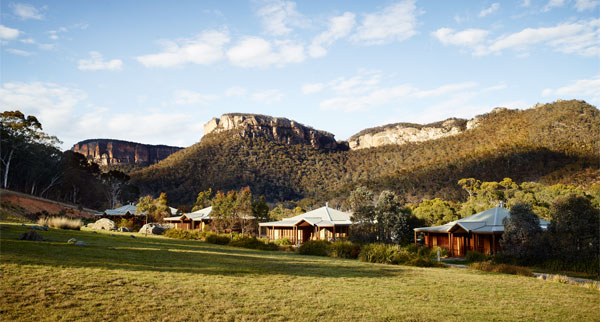
True blue
Travelling west to the Blue Mountains the next day, we reach the base for our final adventure: the Emirates One&Only Wolgan Valley. Here, they are also protecting the land, albeit in a different way. An estimated 9,000 kangaroos, wallaroos and wallabies live on this 7,000-acre reserve – that just so happens to have a luxury resort on it – and no cars are allowed.
In total there’s more than a million hectares of mountains, forests and waterfalls in the Blue Mountains, and 90 miles of walking tracks. We set out early next morning on a bracing hike to the top of Donkey Mountain to view the staggering rock formations up-close. The air is scented with eucalyptus and clematis, and we’re wrapped in mist as we weave our way through the silvery barks and acid‑green mosses of the forest.
“If trekking’s not for you, there’s also horse riding, gentler nature walks and a scenic railway hereabouts.”
“Everything here is upside-down to what you know,” says our guide. “The mountains aren’t really blue, it’s the haze from the eucalyptus oil. Autumn bark falls off but the leaves stay. In winter it can be minus 10 but flowers blossom, and the bees don’t sting.”
We come across a sandstone cliff in the forest with white sand tumbling from it – this is the origin of the sand on New South Wales’ beaches. If trekking’s not for you, there’s also horse riding, gentler nature walks and a scenic railway hereabouts.
A roundtrip from Sydney, taking in the Hunter Valley, Port Stephens and the Blue Mountains, takes just nine hours in pure driving time, but such is the diversity here, you could spend weeks exploring and still not see it all.
We crammed in so much: surfing and sand dunes, rainforests and rolling green vineyards, exhilarating bridge climbs and chilling out in our private pools, not to mention the food and drink. I’m just glad I don’t have to squeeze into a wetsuit any time soon.
Ask the agent
“There’s so much more to New South Wales than Sydney. There’s sand dunes, city, mountains, rainforest, beach – you could stay for a month. I didn’t realise how nice the wine was, or how many varieties there were, and the food and fresh produce were incredible too. The people, their passion, and the experiences just shine. The most surprising thing for me was discovering an Aboriginal cultural tourism spot less than two hours from Sydney, so you don’t have to send clients all the way to Uluru. Andrew, our guide, was fantastic, and hearing his stories allowed us to see into their culture. As well as that, the landscape was beautiful and the quad biking brilliant.”
Linda Moyes, Freedom Australia
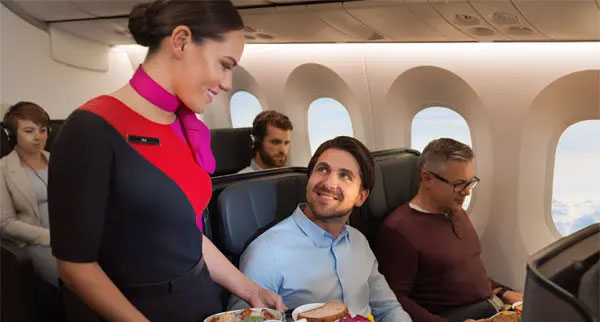
Flight file
Ellie Fazan finds out what it’s like to take the world’s longest passenger flight.
Airline: Qantas
Cabin: Premium economy
Route: Sydney to London, via Perth
The verdict: After a shower, a relaxing stretch class and a hot dog from the outdoor barbecue in the new International Transit Lounge in Perth, I’m feeling relaxed and ready for the 17-hour journey ahead.
It’s the first time I’ve flown non-stop from Australia and I’m bizarrely excited. After taking off, I relax into a comfy seat as flight attendants hand out glasses of fizz. Although I’m in the middle of the middle row, at 22.8 inches wide and with a 38in seat pitch and 9.5in recline, the seat feels surprisingly spacious.
At meal times, cabin staff lay a white table cloth over our fold-out tables, and food – designed to increase hydration and reduce jet lag – ranges from a hearty beef stew to zingy Asian chicken salad. The wines are all Australian and specially selected by a sommelier.
“With its new focus on ultra-long-haul flights, the airline has partnered with the University of Sydney to research air-travel health and wellbeing.”
Healthy snacks are available throughout the flights, and there’s coconut water and kombucha to aid hydration, as well as bespoke herbal teas. I’d love to offer a verdict on the entertainment available on board, but the truth is I slept most of the way back!
Did you know? Qantas has plans to introduce non-stop flights from London to Melbourne and Sydney. And with its new focus on ultra-long-haul flights, the airline has partnered with the University of Sydney to research air-travel health and wellbeing. The next step involves trials with frequent flyers using wearable technology to collect data to make the journey even better.
Book it: A return fare from London to Perth is £864 in economy, £2,097 in premium economy; flights from Heathrow to Sydney via Singapore cost from £714 in economy or £2,220 in premium economy.
qantas.com
Read more
Exploring Fraser Island, Queensland
Western Australia: Wine, walking and water sports
The best things to do in Queensland, Australia

